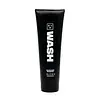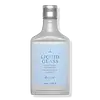What's inside
What's inside
 Key Ingredients
Key Ingredients

 Benefits
Benefits

 Concerns
Concerns

 Ingredients Side-by-side
Ingredients Side-by-side

Water
Skin ConditioningSodium Cocoyl Isethionate
CleansingSodium Lauroyl Methyl Isethionate
CleansingCocamide Mea
EmulsifyingGlycerin
HumectantSodium Lauroamphoacetate
CleansingAcrylates Copolymer
Polyglyceryl-3 Laurate
EmulsifyingAlanine
MaskingAmodimethicone
Arginine
MaskingAspartic Acid
MaskingBHT
AntioxidantC12-13 Pareth-23
CleansingC12-13 Pareth-3
EmulsifyingCaprylyl Glycol
EmollientCetrimonium Chloride
AntimicrobialCitric Acid
BufferingCocamide Mipa
EmulsifyingCoco-Glucoside
CleansingCocos Nucifera Oil
MaskingDecyl Glucoside
CleansingDimethicone
EmollientDisodium EDTA
Disteareth-75 Ipdi
Divinyldimethicone/Dimethicone Copolymer
Ethylhexyl Olivate
Skin ConditioningParfum
MaskingGlyceryl Oleate
EmollientGlycine
BufferingGlycol Distearate
EmollientGuar Hydroxypropyltrimonium Chloride
Skin ConditioningHistidine
HumectantHydrolyzed Hibiscus Esculentus Extract
Skin ConditioningIsoleucine
Skin ConditioningLaureth-23
CleansingLaureth-4
EmulsifyingLauryl Glucoside
CleansingPalmitamidopropyltrimonium Chloride
Panthenol
Skin ConditioningPCA
HumectantPhenoxyethanol
PreservativePhenylalanine
MaskingPolyquaternium-7
Potassium Hydroxide
BufferingProline
Skin ConditioningSerine
MaskingSodium Lactate
BufferingSodium PCA
HumectantSqualane
EmollientThreonine
Trideceth-15
EmulsifyingTrideceth-3
EmulsifyingValine
MaskingLimonene
PerfumingLinalool
PerfumingWater, Sodium Cocoyl Isethionate, Sodium Lauroyl Methyl Isethionate, Cocamide Mea, Glycerin, Sodium Lauroamphoacetate, Acrylates Copolymer, Polyglyceryl-3 Laurate, Alanine, Amodimethicone, Arginine, Aspartic Acid, BHT, C12-13 Pareth-23, C12-13 Pareth-3, Caprylyl Glycol, Cetrimonium Chloride, Citric Acid, Cocamide Mipa, Coco-Glucoside, Cocos Nucifera Oil, Decyl Glucoside, Dimethicone, Disodium EDTA, Disteareth-75 Ipdi, Divinyldimethicone/Dimethicone Copolymer, Ethylhexyl Olivate, Parfum, Glyceryl Oleate, Glycine, Glycol Distearate, Guar Hydroxypropyltrimonium Chloride, Histidine, Hydrolyzed Hibiscus Esculentus Extract, Isoleucine, Laureth-23, Laureth-4, Lauryl Glucoside, Palmitamidopropyltrimonium Chloride, Panthenol, PCA, Phenoxyethanol, Phenylalanine, Polyquaternium-7, Potassium Hydroxide, Proline, Serine, Sodium Lactate, Sodium PCA, Squalane, Threonine, Trideceth-15, Trideceth-3, Valine, Limonene, Linalool
Water
Skin ConditioningSodium Lauroyl Sarcosinate
CleansingSodium Cocoyl Isethionate
CleansingSodium Lauroyl Methyl Isethionate
CleansingCocamidopropyl Hydroxysultaine
CleansingQuaternium-91
Acrylates Crosspolymer-4
Emulsion StabilisingGlycerin
HumectantAstrocaryum Murumuru Seed Butter
EmollientHydrolyzed Vegetable Protein
Skin ConditioningBabassuamidopropyl Betaine
CleansingZea Mays Oil
EmulsifyingHydrolyzed Hyaluronic Acid
HumectantSodium Hyaluronate
HumectantBHT
AntioxidantBrassica Campestris/Aleurites Fordi Oil Copolymer
Skin ConditioningC12-13 Pareth-23
CleansingCaprylyl Glycol
EmollientCinnamidopropyltrimonium Chloride
Citric Acid
BufferingCitrus Aurantium Amara Peel Oil
Skin ConditioningC12-13 Pareth-3
EmulsifyingCocamide Mipa
EmulsifyingDimethicone
EmollientDimethiconol
EmollientDipropylene Glycol
HumectantDisodium EDTA
Disteareth-75 Ipdi
Divinyldimethicone/Dimethicone Copolymer
Parfum
MaskingGlycol Distearate
EmollientGuar Hydroxypropyltrimonium Chloride
Skin ConditioningPhenoxyethanol
PreservativePolyglyceryl-3 Laurate
EmulsifyingPolyquaternium-7
Polyquaternium-70
Polysilicone-29
PPG-3 Benzyl Ether Myristate
EmollientPropanediol
SolventQuaternium-95
UV AbsorberSilicone Quaternium-18
EmollientSodium Hydroxide
BufferingSodium Lauroamphoacetate
CleansingTrideceth-12
EmulsifyingTrideceth-6
EmulsifyingPentaerythrityl Tetra-Di-T-Butyl Hydroxyhydrocinnamate
AntioxidantSodium Benzoate
MaskingSodium Isethionate
CleansingSodium Chloride
MaskingTocopherol
AntioxidantTrisodium Ethylenediamine Disuccinate
Glycolic Acid
BufferingLactic Acid
BufferingCoumarin
PerfumingWater, Sodium Lauroyl Sarcosinate, Sodium Cocoyl Isethionate, Sodium Lauroyl Methyl Isethionate, Cocamidopropyl Hydroxysultaine, Quaternium-91, Acrylates Crosspolymer-4, Glycerin, Astrocaryum Murumuru Seed Butter, Hydrolyzed Vegetable Protein, Babassuamidopropyl Betaine, Zea Mays Oil, Hydrolyzed Hyaluronic Acid, Sodium Hyaluronate, BHT, Brassica Campestris/Aleurites Fordi Oil Copolymer, C12-13 Pareth-23, Caprylyl Glycol, Cinnamidopropyltrimonium Chloride, Citric Acid, Citrus Aurantium Amara Peel Oil, C12-13 Pareth-3, Cocamide Mipa, Dimethicone, Dimethiconol, Dipropylene Glycol, Disodium EDTA, Disteareth-75 Ipdi, Divinyldimethicone/Dimethicone Copolymer, Parfum, Glycol Distearate, Guar Hydroxypropyltrimonium Chloride, Phenoxyethanol, Polyglyceryl-3 Laurate, Polyquaternium-7, Polyquaternium-70, Polysilicone-29, PPG-3 Benzyl Ether Myristate, Propanediol, Quaternium-95, Silicone Quaternium-18, Sodium Hydroxide, Sodium Lauroamphoacetate, Trideceth-12, Trideceth-6, Pentaerythrityl Tetra-Di-T-Butyl Hydroxyhydrocinnamate, Sodium Benzoate, Sodium Isethionate, Sodium Chloride, Tocopherol, Trisodium Ethylenediamine Disuccinate, Glycolic Acid, Lactic Acid, Coumarin
Ingredients Explained
These ingredients are found in both products.
Ingredients higher up in an ingredient list are typically present in a larger amount.
BHT is a synthetic antioxidant and preservative.
As an antioxidant, it helps your body fight off free-radicals. Free-radicals are molecules that may damage your skin cells.
As a preservative, it is used to stabilize products and prevent them from degrading. Specifically, BHT prevents degradation from oxidation.
The concerns related to BHT come from oral studies; this ingredient is currently allowed for use by both the FDA and EU.
However, it was recently restricted for use in the UK as of April 2024.
Learn more about BHTWe don't have a description for C12-13 Pareth-23 yet.
We don't have a description for C12-13 Pareth-3 yet.
Caprylyl Glycol is a humectant and emollient, meaning it attracts and preserves moisture.
It is a common ingredient in many products, especially those designed to hydrate skin. The primary benefits are retaining moisture, skin softening, and promoting a healthy skin barrier.
Though Caprylyl Glycol is an alcohol derived from fatty acids, it is not the kind that can dry out skin.
This ingredient is also used as a preservative to extend the life of products. It has slight antimicrobial properties.
Learn more about Caprylyl GlycolCitric Acid is an alpha hydroxy acid (AHA) naturally found in citrus fruits like oranges, lemons, and limes.
Like other AHAs, citric acid can exfoliate skin by breaking down the bonds that hold dead skin cells together. This helps reveal smoother and brighter skin underneath.
However, this exfoliating effect only happens at high concentrations (20%) which can be hard to find in cosmetic products.
Due to this, citric acid is usually included in small amounts as a pH adjuster. This helps keep products slightly more acidic and compatible with skin's natural pH.
In skincare formulas, citric acid can:
While it can provide some skin benefits, research shows lactic acid and glycolic acid are generally more effective and less irritating exfoliants.
Most citric acid used in skincare today is made by fermenting sugars (usually from molasses). This synthetic version is identical to the natural citrus form but easier to stabilize and use in formulations.
Read more about some other popular AHA's here:
Learn more about Citric AcidWe don't have a description for Cocamide Mipa yet.
Dimethicone is a type of synthetic silicone created from natural materials such as quartz.
What it does:
Dimethicone comes in different viscosities:
Depending on the viscosity, dimethicone has different properties.
Ingredients lists don't always show which type is used, so we recommend reaching out to the brand if you have questions about the viscosity.
This ingredient is unlikely to cause irritation because it does not get absorbed into skin. However, people with silicone allergies should be careful about using this ingredient.
Note: Dimethicone may contribute to pilling. This is because it is not oil or water soluble, so pilling may occur when layered with products. When mixed with heavy oils in a formula, the outcome is also quite greasy.
Learn more about DimethiconeDisodium EDTA plays a role in making products more stable by aiding other preservatives.
It is a chelating agent, meaning it neutralizes metal ions that may be found in a product.
Disodium EDTA is a salt of edetic acid and is found to be safe in cosmetic ingredients.
Learn more about Disodium EDTAWe don't have a description for Disteareth-75 Ipdi yet.
Divinyldimethicone/Dimethicone Copolymer is a type of silicone.
Glycerin is already naturally found in your skin. It helps moisturize and protect your skin.
A study from 2016 found glycerin to be more effective as a humectant than AHAs and hyaluronic acid.
As a humectant, it helps the skin stay hydrated by pulling moisture to your skin. The low molecular weight of glycerin allows it to pull moisture into the deeper layers of your skin.
Hydrated skin improves your skin barrier; Your skin barrier helps protect against irritants and bacteria.
Glycerin has also been found to have antimicrobial and antiviral properties. Due to these properties, glycerin is often used in wound and burn treatments.
In cosmetics, glycerin is usually derived from plants such as soybean or palm. However, it can also be sourced from animals, such as tallow or animal fat.
This ingredient is organic, colorless, odorless, and non-toxic.
Glycerin is the name for this ingredient in American English. British English uses Glycerol/Glycerine.
Learn more about GlycerinGlycol Distearate serves as a pearlizing or opacifying agent in cosmetic products.
It's often included in cleansers and haircare products to give them a lustrous or shimmering appearance.
It is derived from stearic acid, a natural fatty acid commonly found in vegetable oils and animal fats.
Glycol Distearate isn't fungal acne safe.
Learn more about Glycol DistearateThis ingredient is derived from guar gum.
It is a conditioning ingredient, meaning it helps soften skin and hair.
Parfum is a catch-all term for an ingredient or more that is used to give a scent to products.
Also called "fragrance", this ingredient can be a blend of hundreds of chemicals or plant oils. This means every product with "fragrance" or "parfum" in the ingredients list is a different mixture.
For instance, Habanolide is a proprietary trade name for a specific aroma chemical. When used as a fragrance ingredient in cosmetics, most aroma chemicals fall under the broad labeling category of “FRAGRANCE” or “PARFUM” according to EU and US regulations.
The term 'parfum' or 'fragrance' is not regulated in many countries. In many cases, it is up to the brand to define this term.
For instance, many brands choose to label themselves as "fragrance-free" because they are not using synthetic fragrances. However, their products may still contain ingredients such as essential oils that are considered a fragrance by INCI standards.
One example is Calendula flower extract. Calendula is an essential oil that still imparts a scent or 'fragrance'.
Depending on the blend, the ingredients in the mixture can cause allergies and sensitivities on the skin. Some ingredients that are known EU allergens include linalool and citronellol.
Parfum can also be used to mask or cover an unpleasant scent.
The bottom line is: not all fragrances/parfum/ingredients are created equally. If you are worried about fragrances, we recommend taking a closer look at an ingredient. And of course, we always recommend speaking with a professional.
Learn more about ParfumPhenoxyethanol is a preservative that has germicide, antimicrobial, and aromatic properties. Studies show that phenoxyethanol can prevent microbial growth. By itself, it has a scent that is similar to that of a rose.
It's often used in formulations along with Caprylyl Glycol to preserve the shelf life of products.
We don't have a description for Polyglyceryl-3 Laurate yet.
Polyquaternium-7 is a light to clear colored liquid. It is commonly found in haircare products for its film-forming and anti-static properties.
According to a manufacturer, it is a non-paraben and specially developed for negatively charged surfactant systems. This makes it a great hairstyle holder and helps to improve wet hair detangling without adding buildup.
Sodium cocoyl isethionate is a natural ingredient from coconut oil. It is an ultra gentle cleanser that gives a nice foam without drying the skin or impacting the skin barrier.
The amount of foam created depends on the amount of sodium cocoyl isethionate used in the product.
This ingredient also helps improve the spreadability of a product.
Learn more about Sodium Cocoyl IsethionateWe don't have a description for Sodium Lauroamphoacetate yet.
Sodium Lauroyl Methyl Isethionate is a cleansing ingredient. It is a surfactant, meaning it helps gather dirt, oil, and other pollutants. This helps them be rinsed away easily.
Water. It's the most common cosmetic ingredient of all. You'll usually see it at the top of ingredient lists, meaning that it makes up the largest part of the product.
So why is it so popular? Water most often acts as a solvent - this means that it helps dissolve other ingredients into the formulation.
You'll also recognize water as that liquid we all need to stay alive. If you see this, drink a glass of water. Stay hydrated!
Learn more about Water